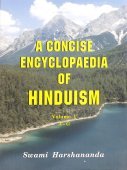Rathotsava, Ratha-utsava: 8 definitions
Introduction:
Rathotsava means something in Hinduism, Sanskrit, Marathi, Hindi. If you want to know the exact meaning, history, etymology or English translation of this term then check out the descriptions on this page. Add your comment or reference to a book if you want to contribute to this summary article.
Alternative spellings of this word include Rathotsav.
In Hinduism
Shaivism (Shaiva philosophy)
Source: Shodhganga: Temple management in the ĀgamasRathotsava (रथोत्सव) refers to the “chariot festival” as described in the Śaivāgamas.—If there is no rathotsava or the chariot festival, the people of the kingdom become debased and evil. Therefore śāntihoma should be performed and the chariot be run again. If the chariot or a part of it breaks while being run, the earth shall break. It should be repaired immediately and śāntihoma performed.

Shaiva (शैव, śaiva) or Shaivism (śaivism) represents a tradition of Hinduism worshiping Shiva as the supreme being. Closely related to Shaktism, Shaiva literature includes a range of scriptures, including Tantras, while the root of this tradition may be traced back to the ancient Vedas.
Languages of India and abroad
Marathi-English dictionary
Source: DDSA: The Molesworth Marathi and English Dictionaryrathōtsava (रथोत्सव).—m (S) rathōtsāha m (S) A festival in which idols are placed in their cars and paraded about.
Source: DDSA: The Aryabhusan school dictionary, Marathi-Englishrathōtsava (रथोत्सव).—m A festival in which idols are placed in their cars and paraded about.
Marathi is an Indo-European language having over 70 million native speakers people in (predominantly) Maharashtra India. Marathi, like many other Indo-Aryan languages, evolved from early forms of Prakrit, which itself is a subset of Sanskrit, one of the most ancient languages of the world.
Sanskrit dictionary
Source: Cologne Digital Sanskrit Dictionaries: Monier-Williams Sanskrit-English DictionaryRathotsava (रथोत्सव):—[from ratha] m. a car-festival, a solemn procession of an idol mounted on a car, [Catalogue(s)]
[Sanskrit to German]
Sanskrit, also spelled संस्कृतम् (saṃskṛtam), is an ancient language of India commonly seen as the grandmother of the Indo-European language family (even English!). Closely allied with Prakrit and Pali, Sanskrit is more exhaustive in both grammar and terms and has the most extensive collection of literature in the world, greatly surpassing its sister-languages Greek and Latin.
Hindi dictionary
Source: DDSA: A practical Hindi-English dictionaryRathotsava (रथोत्सव) [Also spelled rathotsav]:—(nm) see [ratha-yātrā].
...
Kannada-English dictionary
Source: Alar: Kannada-English corpusRathōtsava (ರಥೋತ್ಸವ):—[noun] a festival on which the idol of the main deity of a temple is taken in procession in a chariot or car.
Kannada is a Dravidian language (as opposed to the Indo-European language family) mainly spoken in the southwestern region of India.
See also (Relevant definitions)
Partial matches: Ratha, Utsava.
Ends with: Surathotsava.
Full-text: Ratorcavam, Rathamahotsava, Surathotsava, Rathotsav, Ani.
Relevant text
Search found 2 books and stories containing Rathotsava, Ratha-utsava, Rathōtsava; (plurals include: Rathotsavas, utsavas, Rathōtsavas). You can also click to the full overview containing English textual excerpts. Below are direct links for the most relevant articles:
The Skanda Purana (by G. V. Tagare)
Chapter 43 - Establishment of Bhaṭṭāditya < [Section 2 - Kaumārikā-khaṇḍa]
Preceptors of Advaita (by T. M. P. Mahadevan)
Related products
